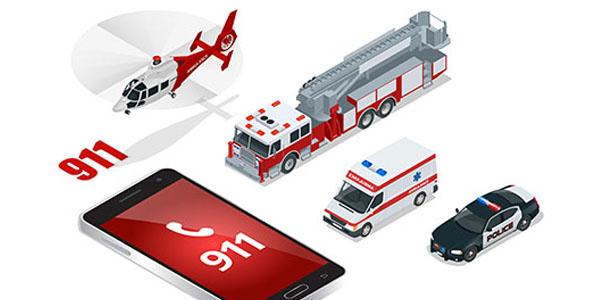Public Safety Communications Enterprise Takes Shape
The U.S. Defense Department is working toward a nationwide comprehensive public safety communications network that addresses most of the drawbacks facing emergency communications today. Local bases would offer the same capabilities for routine and critical emergency communications, and they would interact with state, tribal and local government systems.
How this network would be built and function is the focus of a track at TechNet Cyber 2020, AFCEA’s virtual event being held December 1-3. Leading officials with the Defense Information Systems Agency (DISA) and industry are outlining challenges and opportunities beckoning the defense communications community.
This new enterprise system, known as PSCE, would address base needs as if it were focused on new technologies and capabilities at DOD facilities. But it would interact with local emergency systems to upgrade their own capabilities while ensuring interoperability.
“A benefit [from the public safety communications enterprise] is highly accurate response to public safety events on Defense Department facilities,” said James Travis, senior manager for public safety communications enterprise, DISA. “Public safety communications is now designated as a mission critical C3 system.”
Public safety communications is now designated as a mission critical C3 system.—Dr. James Travis, senior manager for public safety communications enterprise, DISA #AFCEACyber #AFCEATechNet @USDISA
— Bob Ackerman (@rkackerman) December 1, 2020
Maj. Gen. Garrett Yee, USA, assistant to the director, DISA, said the Defense Department is working on this unified capability for national public safety communications for several reasons. One of those is that the homeland may be considered an operational area, especially with adversarial naval forces operating off the U.S. coast. The system will require phones and emergency call systems to have a two-way texting ability, he added.
Maj. Gen. Garrett Yee, USA, assistant to the director, DISA, says the Defense Department is working on a unified capability for national public safety communications. #AFCEACyber #AFCEATechNet @USDISA
— Bob Ackerman (@rkackerman) December 1, 2020
The Defense Department wants to engage with industry for PSCE development, Travis stated. The Internet of Things (IoT) will play a major role in the development of this enterprise system, as IoT sensors will provide broad situational awareness for rapid alert and response.
Several key tenets characterize PSCE efforts. An important element is upgrading the nationwide 911 system to IP/NextGen911, in which Internet protocol (IP) phone systems form the basis of 911 capabilities. A related element is the transition from time-division multiplexing (TDM) to IP telephony. Other key aspects include computer-aided dispatch, a common operational picture, emergency mass warning IP-enabled alarm panels and sensors from the IoT, land-mobile radio/FirstNet integration and the incorporation of the 988 suicide hotline.
Travis noted that, during the transition period, the department and local governments have to ensure legacy systems still work. DISA is proposing pilot programs that focus on regionalization and how to take advantage of the new capabilities.
The agency also is proposing to form operational process teams that will focus on different aspects of the enterprise, in terms of both capability and organizational activity. “We cannot let enterprise get in the way of making these things work,” Travis stated.





Comment
Bob: Happy New Year to you
Bob: Happy New Year to you and yours. Interesting coincidence that you wrote this article at this time, although the conference timing obviously had something to do with it. Who does James Travis report to at DISA? He was Division Chief, Cyber Situational Awareness (SA) / CyberNetOps Solutions Division until December, so this is a sideways move for him. I commend you for coherently knitting together all the moving parts in his new domain in this article. Best regards, Mark
Comments